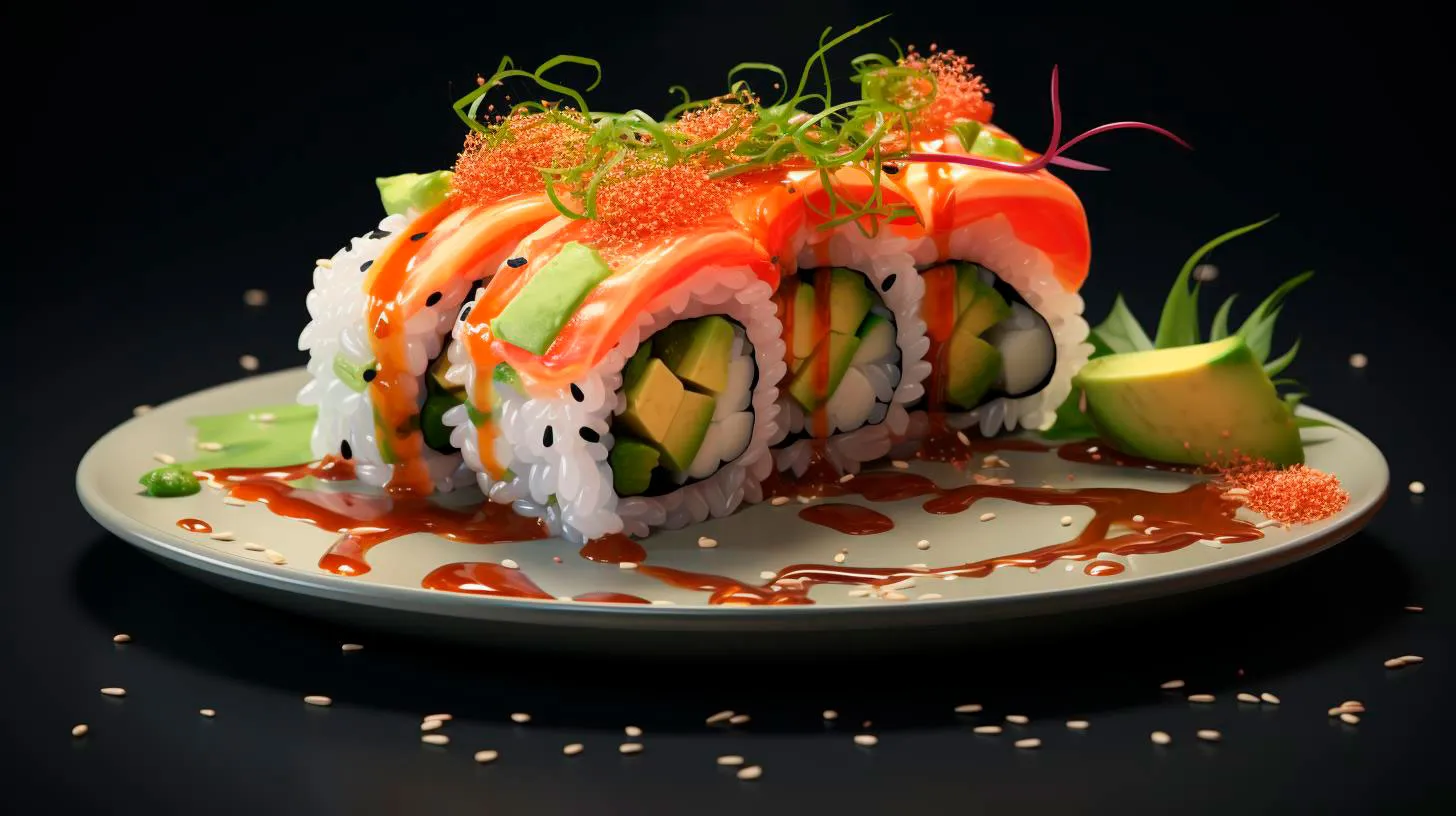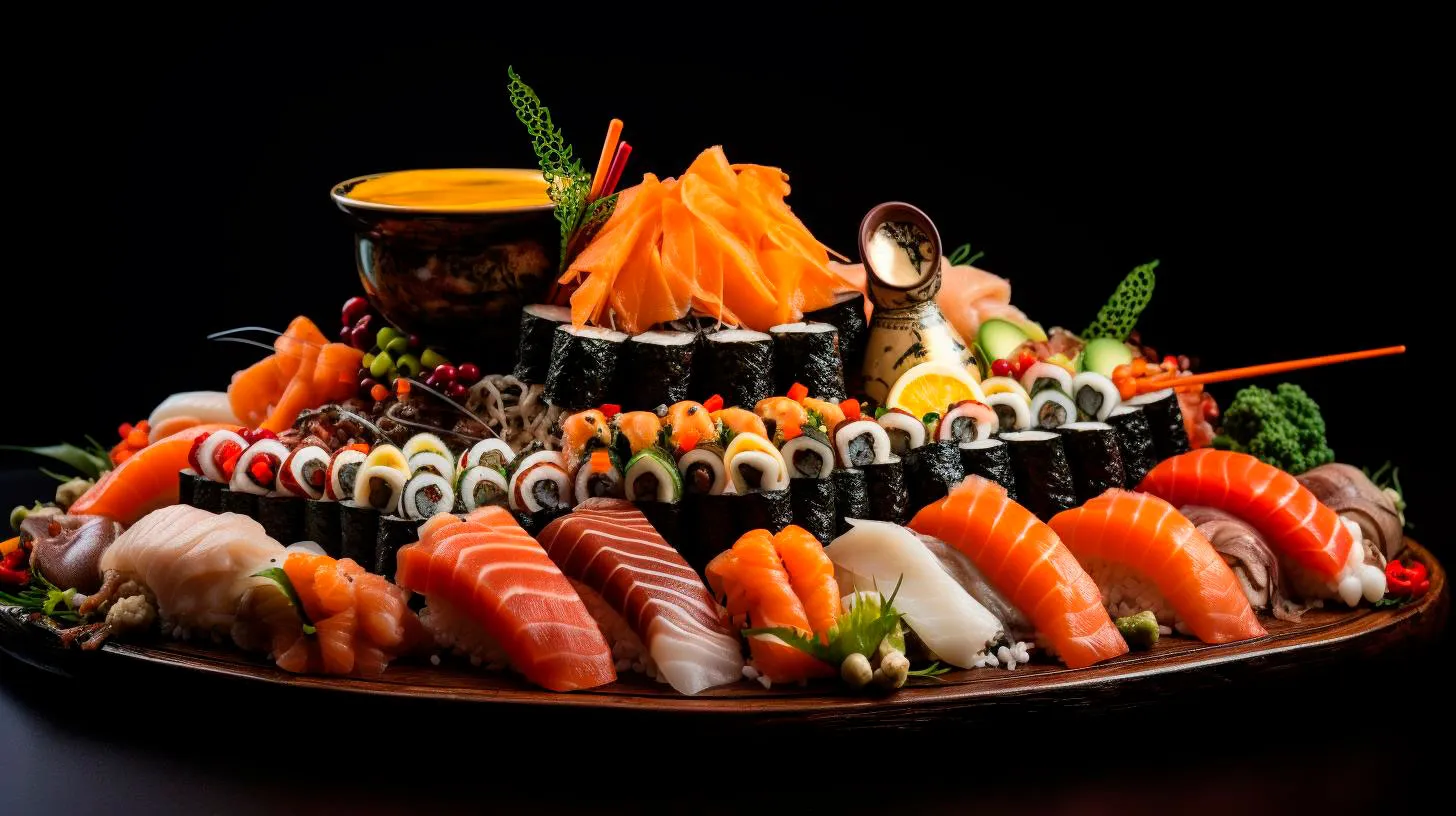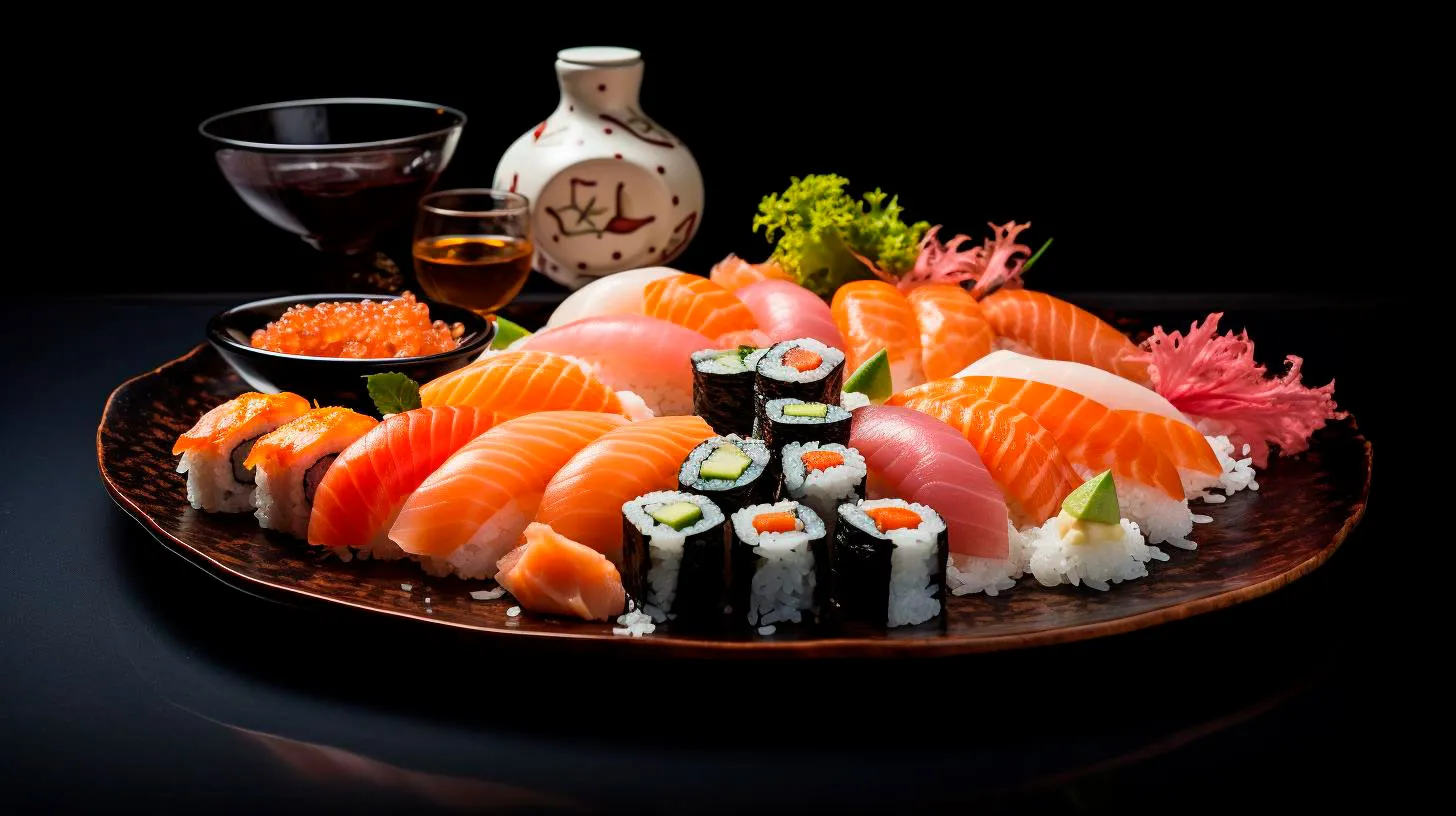Tea as a Meditative Practice: Finding Inner Balance in Japanese Martial Arts
One such practice that beautifully exemplifies this philosophy is the art of tea. While tea is often associated with relaxation and indulgence, it holds a deeper meaning in the realm of Japanese martial arts. In this article, we explore the meditative aspects of tea and its profound impact on finding inner balance.
The Significance of Tea in Japanese Martial Arts
Tea, or “chanoyu” in Japanese, is an integral part of traditional Japanese culture and plays a significant role in the martial arts world. It is often referred to as the “Way of Tea” or “Chado.” Developed in the 16th century by master Sen no Rikyu, Chado focuses on simplicity, respect, and the practice of mindfulness. Through the meticulous preparation and serving of tea, participants aim to achieve a state of tranquility and self-awareness.
Several martial arts disciplines, such as the iconic Japanese martial art of Aikido, incorporate tea ceremonies as an essential component of their training. This integration is based on the belief that the practice of tea can enhance the practitioner’s ability to concentrate, remain calm under pressure, and gain a deep understanding of themselves and their surroundings.
The Meditative Ritual of Tea
Preparing and serving tea in the traditional Japanese tea ceremony is a highly ritualistic process, encompassing various gestures and movements that require focused attention. The entire ceremony is structured to create a contemplative and serene atmosphere conducive to meditation.
During a tea ceremony, participants engage in a series of carefully choreographed movements, including the cleansing of utensils, precise measurements of tea leaves, and the graceful pouring of hot water into ceramic bowls. Each motion is deliberate, with deep symbolism and meaning attached to it.
Here are some key components of the tea ceremony:
- Chawan: The tea bowl is considered one of the most important elements of the ceremony. Its design and craftsmanship reflect centuries of tradition and artistry.
- Matcha: The tea used in the ceremony is a powdered green tea called matcha. It is known for its rich flavor and high concentration of antioxidants.
- Tradition: The ceremony follows a prescribed set of actions and procedures, handed down through generations. It honors the timeless traditions and cultural heritage of Japan.
- Purity: Utmost care is taken to ensure the purity of the tea, water, and utensils used. The emphasis on purity symbolizes the purity of heart and mind.
Finding Inner Balance through Tea
The tea ceremony provides practitioners with a unique opportunity to cultivate a state of mindfulness, creating a space for reflection and self-discovery. It is a momentary escape from the chaos of everyday life, allowing individuals to connect with their inner selves and find harmony within.
Here are some key takeaways from the meditative practice of tea:
- Mindfulness and Focus: The tea ceremony encourages participants to be fully present in the moment, focusing their attention on every gesture and detail. This cultivates mindfulness and enhances concentration, which can be applied to martial arts and daily life.
- Self-Reflection: The peaceful atmosphere of the tea ceremony encourages self-reflection and introspection. It provides an opportunity to explore one’s thoughts, emotions, and inner motivations, fostering personal growth and self-awareness.
- Community and Harmony: Tea ceremonies are often conducted in small groups, emphasizing the importance of community and connection. Sharing a cup of tea fosters a sense of harmony and unity, creating a supportive environment for participants.
Statistics Supporting the Benefits of Meditative Practices
Research has shown that incorporating meditative practices, such as tea ceremonies, into one’s daily routine can have numerous mental, emotional, and physical benefits. Here are some relevant statistics:
1. Stress Reduction:
According to a study published in the Journal of Psychosomatic Research, engaging in regular meditative practices can reduce stress and anxiety by 44%.
2. Improved Focus and Mental Clarity:
A study conducted at the University of California found that individuals who practiced meditation experienced improved cognitive function and enhanced ability to sustain attention.
3. Increased Emotional Well-being:
Research published in the Journal of Happiness Studies revealed that mindfulness meditation can lead to a significant increase in overall happiness and life satisfaction.
Conclusion
The meditative practice of tea within Japanese martial arts offers a unique path to inner balance and harmony. Through the seemingly simple act of preparing and sharing tea, practitioners gain a profound understanding of themselves and their surroundings. The tea ceremony provides a sanctuary where mindfulness, self-reflection, and community merge harmoniously. By embracing these principles, martial artists can cultivate a heightened sense of awareness, resilience, and inner peace that extends beyond the dojo.
Elevating the Senses: The Aesthetic Experience of Tea in Japanese Martial Arts
This blending of martial arts and tea ceremony creates an aesthetic experience that not only pleases the senses but also nourishes the soul.
The Art of Tea Ceremony
Tea ceremony, also known as “sadō” or “chadō,” is an elegant ritual deeply ingrained in Japanese culture. It originated in the 9th century and has since become a core aspect of traditional Japanese arts. The ceremony involves the preparation and serving of matcha, powdered green tea, in a meticulously choreographed manner.
The tea ceremony focuses on four main principles: harmony (wa), respect (kei), purity (sei), and tranquility (jaku). The tea master, or “chajin,” meticulously follows these principles and creates an atmosphere of serenity and grace throughout the ceremony. From the selection of tea utensils to the precise movements, every step is carefully executed to elevate the guests’ aesthetic experience.
The aesthetic aspects of tea ceremony are a key component of Japanese martial arts, which emphasize the pursuit of beauty and balance alongside physical strength and technique. By practicing tea ceremony, martial artists can cultivate a heightened awareness of their surroundings, promoting both physical and mental well-being.
The Five Senses and the Tea Ceremony
The tea ceremony engages all five senses, creating a multi-dimensional experience that immerses participants in the moment. Here’s how each sense plays a role:
1. Sight
- The presentation of the tea utensils, the vibrant green color of the matcha, and the serene surroundings of the tea room collectively create a visually captivating experience.
- Key takeaway: Visually appealing elements set the stage for an elevated aesthetic experience.
2. Sound
- The subtle sounds produced by the tea utensils, such as the rustling of a bamboo whisk or the delicate pouring of hot water, contribute to the overall tranquility of the ceremony.
- Key takeaway: Even the quietest sounds can add depth and serenity to the atmosphere.
3. Smell
- The aroma of the matcha tea wafting through the air invigorates the senses and prepares participants for the sensory journey that awaits.
- Key takeaway: Aroma has the power to transport individuals to a different state of mind.
4. Taste
- Tasting the matcha, with its unique flavor profile and smooth texture, is the pinnacle of the tea ceremony. It stimulates the taste buds while providing a moment of pure indulgence.
- Key takeaway: The taste of tea can evoke a deeper appreciation for the present moment.
5. Touch
- The act of holding and handling the tea utensils, such as the chawan (tea bowl) and chashaku (tea scoop), connects participants to the centuries-old traditions of the tea ceremony.
- Key takeaway: The physical touch can create a sense of connection with the past.
Aesthetic Benefits of Tea Practice in Martial Arts
Integrating tea ceremony into martial arts practice offers several benefits beyond the physical training. Here are some key advantages:
1. Cultivating mindfulness
- The meditative nature of tea ceremony encourages martial artists to be fully present in the moment, enhancing focus and concentration.
- Key takeaway: Tea practice cultivates mindfulness, leading to improved performance in martial arts and everyday life.
2. Appreciation for subtleties
- The attention to detail in the tea ceremony enhances one’s ability to notice and appreciate subtle movements, sounds, and sensations, which can be applied to martial arts techniques.
- Key takeaway: Heightened perception helps martial artists refine their techniques and become more versatile.
3. Nurturing discipline and patience
- Tea ceremony requires discipline and patience to master the intricate rituals. Martial artists who practice tea develop these qualities, which are crucial in martial arts training.
- Key takeaway: Tea practice instills discipline and patience, translating into improved martial arts skills.
4. Expressing creativity
- The tea ceremony offers space for self-expression and creativity, allowing martial artists to explore different ways of connecting with their art forms.
- Key takeaway: Tea practice nurtures creativity, enabling martial artists to develop their own unique styles and techniques.
Incorporating tea ceremony into martial arts not only enhances the aesthetic experience but also deepens the connection to Japanese culture and traditions. By elevating the senses and embracing the beauty of tea, practitioners can enrich their martial arts journey, finding harmony between physical prowess and spiritual fulfillment.
Tea as a Symbolic Connector: Uniting Mind, Body, and Spirit in Japanese Martial Arts
In this article, we will explore how tea serves as a symbolic connector, uniting the mind, body, and spirit in the world of Japanese martial arts.
The Way of Tea: Chado and its Philosophy
Chado, also known as the “Way of Tea,” is a Japanese tea ceremony that embodies harmony, respect, purity, and tranquility. This ancient practice emphasizes the interconnectedness of the mind, body, and spirit, aligning perfectly with the principles upheld in martial arts such as karate, judo, and aikido.
The tea ceremony serves as a meditative and introspective experience, allowing participants to find inner calmness and mindfulness. The focus on every small detail, from the preparation of tea to the serving and consumption, encourages individuals to be present in the moment and cultivate a sense of tranquility.
- Harmony: The tea ceremony teaches participants to harmonize themselves with nature, the surroundings, and other participants. This mindset promotes unity and respect among practitioners, fostering a peaceful environment.
- Respect: Respect is deeply ingrained in traditional Japanese culture. During the tea ceremony, participants show profound respect to the tea master, the tearoom, and each other. This value translates to martial arts, where respect for one’s opponent, teacher, and martial arts itself is paramount.
- Purity: The preparation of tea involves a meticulous process, ensuring cleanliness and purity. This dedication to purity resonates with the pursuit of physical and mental purity in martial arts, allowing practitioners to focus on self-improvement.
- Tranquility: Through the ritual of tea, participants cultivate a state of inner peace and tranquility. This sense of calmness enables martial artists to approach their training with a clear mind, enhancing their focus and performance.
Tea as an Essential Component of Martial Arts Training
The relationship between tea and martial arts goes beyond symbolism. Tea also provides physical and mental benefits that enhance performance and well-being for practitioners.
1. Enhanced Focus and Awareness
The combination of caffeine and theanine found in tea can stimulate the brain, promoting mental alertness and focus. This heightened state of awareness is highly beneficial for martial artists, allowing them to react swiftly and effectively during training or competitions.
2. Physical Endurance and Recovery
The catechins and antioxidants present in tea can aid in boosting physical endurance and reducing muscle inflammation. By incorporating tea into their training routine, martial artists can promote quicker recovery and enhance their overall physical performance.
3. Stress Relief and Emotional Balance
The act of preparing and drinking tea promotes relaxation, reducing stress levels and fostering emotional balance. This aspect is especially valuable for martial artists who often face high-pressure situations, enabling them to remain calm and composed during intense training sessions or competitions.
4. Sense of Community and Connection
Tea ceremonies provide an opportunity for martial artists to come together, share a moment of tranquility, and deepen their bonds. The sense of community and connection formed through the shared experience of tea can nurture supportive relationships among practitioners, creating a supportive and motivational environment.
Key Takeaways
Tea, as a symbolic connector, plays a vital role in the world of Japanese martial arts. By embracing the principles of harmony, respect, purity, and tranquility embodied in the tea ceremony, martial artists can elevate their practice and enhance their overall well-being.
Key takeaways from the article include:
- The Way of Tea, or Chado, aligns with the philosophy of traditional Japanese martial arts.
- The tea ceremony promotes harmony, respect, purity, and tranquility.
- Tea provides physical and mental benefits to martial artists, including enhanced focus, endurance, stress relief, and emotional balance.
- Tea ceremonies cultivate a sense of community and connection among practitioners.
By recognizing tea’s significance in Japanese martial arts, practitioners can deepen their understanding of both disciplines, enriching their journey in these ancient practices.
Exploring the Tea Ceremony Ritualistic Traditions in Japanese Martial Arts
In this article, we will explore the ritualistic traditions of the tea ceremony within Japanese martial arts, shedding light on its history, significance, and its unique connection to Zen philosophy.
The Origins and History of the Tea Ceremony
The tea ceremony, known as “Sado” or “Chado,” dates back to the 9th century in Japan. It was introduced by Buddhist monks and gradually evolved into a form of art, deeply influenced by the principles of Zen Buddhism. The Zen philosophy emphasizes mindfulness, simplicity, and the appreciation of the present moment, which perfectly aligns with the tea ceremony’s core principles.
The most widely recognized figure associated with the tea ceremony is Sen no Rikyu, a tea master from the 16th century. Rikyu’s contributions helped establish the foundation of the tea ceremony as we know it today. His teachings focused on the profound connection between tea preparation, the environment, and the appreciation of beauty in everyday life. Rikyu believed in the concept of “ichigo ichie” or “one time, one meeting,” emphasizing the uniqueness and impermanence of each moment, aligning perfectly with the principles of Zen Buddhism.
The Tea Ceremony and Martial Arts
Although it may seem unusual to some, the integration of the tea ceremony into Japanese martial arts is deeply rooted in the principles shared between both practices. Let’s explore some key reasons behind this integration and the advantages it brings:
- Cultivating a Calm and Focused Mind: Martial arts training requires intense concentration and discipline. The tea ceremony provides an opportunity for martial artists to practice mindfulness, focus, and self-control. By immersing themselves in this serene and meditative process, practitioners can enhance their mental clarity and bring these skills into their martial arts practice.
- Promoting Respect and Humility: The tea ceremony emphasizes humility, respect, and harmony. These values directly align with the core principles of martial arts, fostering a spirit of camaraderie and mutual respect among martial artists.
- Building Social Bonds: The tea ceremony is often performed in groups, creating a space for martial artists to connect on a deeper level outside the confines of combat. Sharing tea and engaging in conversation fosters unity and strengthens the community aspect within martial arts.
- Aesthetic Appreciation and Attention to Detail: Both martial arts and the tea ceremony value the pursuit of perfection in every action. The attention to detail required in preparing and serving tea mirrors the precision and dedication martial artists apply to their techniques.
Key Takeaways: The Essence of the Tea Ceremony in Martial Arts
As we dig deeper into the significance of the tea ceremony in Japanese martial arts, we can draw some key takeaways that highlight its relevance and importance:
- Integration of mindfulness and meditation techniques enhances mental focus and concentration during martial arts practice.
- Cultivation of respect, humility, and harmony creates a positive and supportive environment among martial artists.
- Shared tea ceremonies promote social bonds and strengthen the sense of community within martial arts.
- The pursuit of aesthetic appreciation and attention to detail enables martial artists to refine their techniques and movements.
In conclusion, the tea ceremony is more than just a cultural tradition in Japan; it has become deeply integrated into the world of Japanese martial arts. By embracing the principles of Zen Buddhism and focusing on mindfulness, respect, and harmony, martial artists not only refine their combat skills but also cultivate a sense of inner tranquility and appreciation for the present moment. Through the tea ceremony, martial artists connect with history, tradition, and one another, fostering a holistic approach to their training and personal growth.



